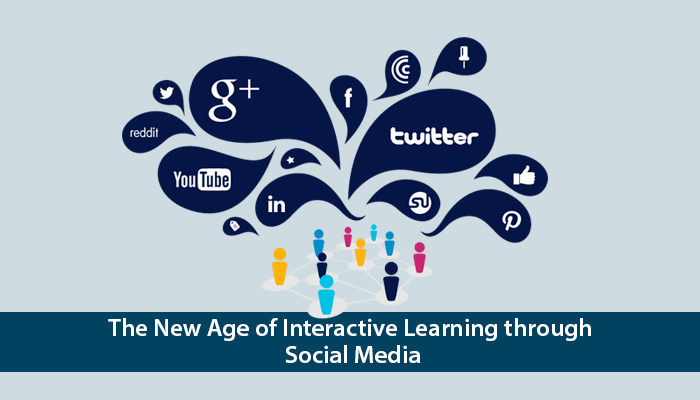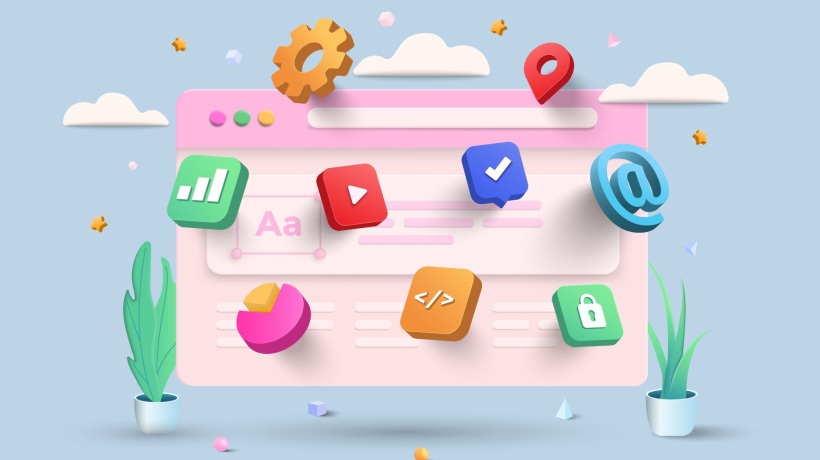Social Media For Interactive Learning
It has been observed by educationalists that human behavior is learned by observing others and later this serves as guidance for our actions. Social networks are the prime tool of social media; Facebook alone caters to 800 million users. More and more social learning tools are emerging with their unique features to teach something new. Professionals are still trying to determine the full potential of these tools and the risks that come with it.
In the modern era, social media have their own set of tools to improve and enrich a user’s learning experience. These tools assist a user through interaction where they work upon it, and hence learn. Here are some tools used for interactive learning through social media:
Social Media Tools For Interactive Learning
- Audacity.
It is free software which helps disseminate an organization’s content and expertise as it is played on handheld devices and computers. Audio can be recorded and edited through this software and it runs on almost all the operating systems. The key features are: Recording via a mixer, audio editing, importing and exporting audio files, effects and quality adjustments, digitizing recordings from tapes. - Edublogs Campus.
This software assists in centralizing and managing of blogs within an institution by sharing them all on one domain. Its main target population is academic, but it is useful in organizations as well due to:- Privacy options.
- Centralized control.
- Security features.
- Custom branding and support.
- Elgg.
Elgg is free software and an open source application. With the help of this software one can create a social networking site of his own on a public or private sector. It comes with templates and plugins for enhancements. It’s a wholesome of many social media tools in one platform, making it more effective for learning and associating. - Wikispaces.
It is one of the famous tools for creating and editing interlinked web pages. It is user friendly and comes with varied pricing models. It promotes associative learning as anyone with rights can add or edit content to the system. - TalkShoe.
TalkShoe is a free web based service which provides a platform for anyone to create, join or listen to a live interactive presentations, discussions and conversations. These shows can be recorded and podcast later.
Pros And Cons Of Using Social Media For Interactive Learning
With great strength comes great responsibility. Social media are powerful platforms, but if not used in a correct manner they can nuke the progress projected by it. Below are few pros and cons of social media.
Pros:
- They're educative.
Every student is fluent in web and social networking technologies, making it easier for the educators to make their learning experience more enriched. - They increase student interactivity.
Using social media for interactive learning is one of the most efficient ways to increase student engagement and build communication skills. The non-participative group of students becomes active due to familiarity of social networking and feels comfortable in expressing themselves. It gives teachers a chance to foster discussions in which students are intimidated to speak out. - They build communication bridges between teachers and students.
These platforms create a comfort zone for students to get answers to their queries anytime. They are also easy to use platforms for teachers to post any event, updates, or share any website. - They can be used for job hunting.
Graduating students can use social networking sites to connect with their employers. Sites like LinkedIn help students create a professional portfolio to attract the right employers. Networking sites like Twitter and Facebook are used in colleges to share information on job openings or internships, etc. Not only students, but also the corporate world with Hadoop can mine Facebook, LinkedIn, Twitter and other social media consulting for sentiment data about their companies and the competition, so that they can be utilized to make targeted, real-time decisions that help upsurging the market shares.
Cons:
- They are distractive.
The main concern of educators has been that social media are distracting in the classroom. Tools like Facebook and Twitter are maintained for sharing learning experience, but students are seen passing away time on these networks. - They can be used for cyber bullying.
Cyber bullying is the biggest risk factor of networking technology. Due to the easy access to information about students, networking sites become an easy place in cyber-bullying. It has been reported that 22% of college students are harassed online. - There is no face to face interaction.
Social media may be providing a platform for shy students to express themselves, but they are also making the students to miss on real life social skills. Students find it difficult to speak at job interviews due to less face to face interactions.
Overall, we can conclude that social media can be an eminent part of learning process. In this fast paced world where one has no time to read a whole book to gain knowledge, it is through social media where we can immerse ourselves in the pool of information on the go. But a balance is to be maintained; the tools of social media for interactive learning should be used with face to face interaction. Their limitations are a concern, but their potential is vast like the sea.









